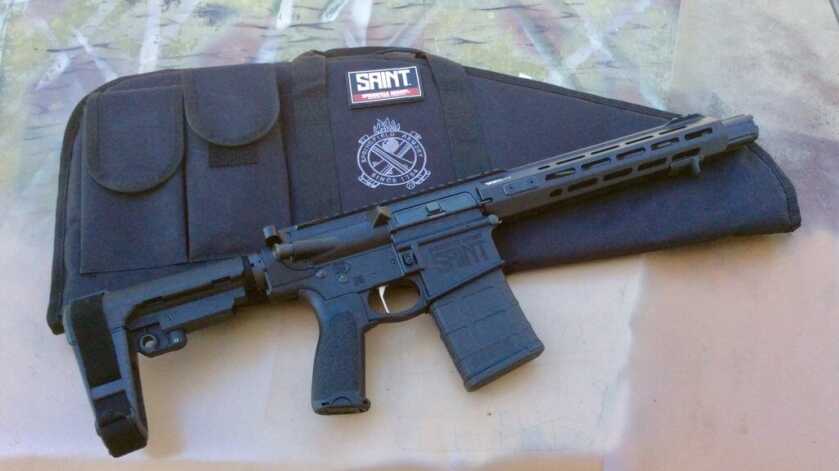
Springfield Armory has christened a new Saint, this one is a pistol and it’s in .308 Win.
My first thought when I saw it was, here is a great traveling gun, or bug out gun, or farm/ranch gun. It’s got enough power to handle any situation you might have come up whether you live in Alaska or Florida. It’s small enough to fit handily in an RV, UTV, boat, plane, automobile, in a pack, or on horseback. It comes with a padded appropriate sized case, that will accept two spare magazines. The gun comes with a PMag, as well as the obligatory lock and the Springfield Armory and Saint logo.

It’s compact, powerful, accurate, and reliable. On the compact end it’s 28.25” collapsed and 30.5” with brace fully extended. The 10.3” barrel provides enough stability at 100 yards, for bullets weighing up to 180grs. which was the heaviest I shot. The lightest used was 110gr. Sierra HP. Included in the reliability and accuracy testing was 145gr. PrviPartisan FMJ, LC Match M118 172gr., and assorted commercial ammo.
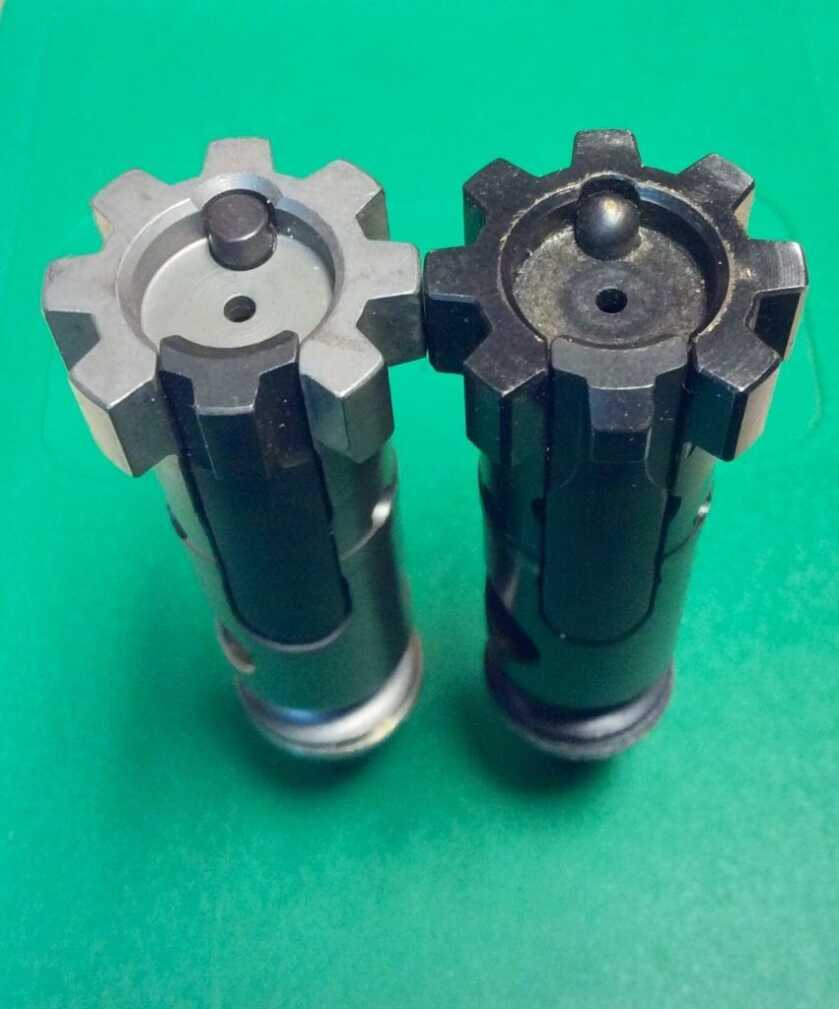
Before the shooting started I disassembled the gun to inspect parts and ensure everything was in proper working order. There were some very subtle differences between this 308 AR, and the others I’ve dealt with. The Victor uses the standard AR10 operating system, which I find much more reliable and easier to maintain. The differences I’d found were not major changes and I don’t know if they will prove a benefit or not, but at least one of them I find beneficial.
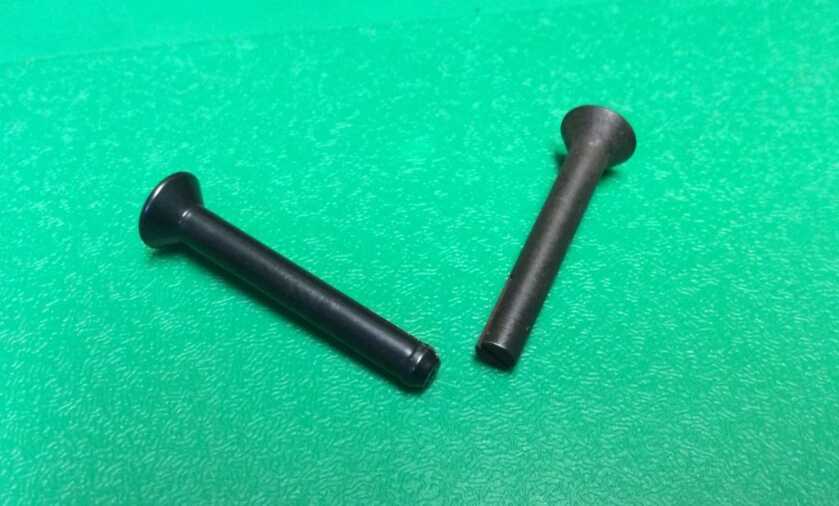
The firing pin retaining pin on the Victor first is solid as it should be but also has a small raised portion on the split end. This raised portion provides very positive retention of the FP retaining pin. On other AR10’s the pin is solid but smooth and consistent in diameter. Numerous times I’ve pulled my BCG and the pin has dropped out of the BCG onto the ground; not with the Victor.

The firing pin is also slightly different from other AR10’s, the end that slips through the bolt head and contacts the primer is slightly smaller in diameter, but everything behind that is much larger in diameter. The last small difference is the ejector plunger where it contacts the base of the case, on the Victor, it is domed, on other AR10’s it is flat. Will these prove beneficial? They are not a hindrance, so time will tell.
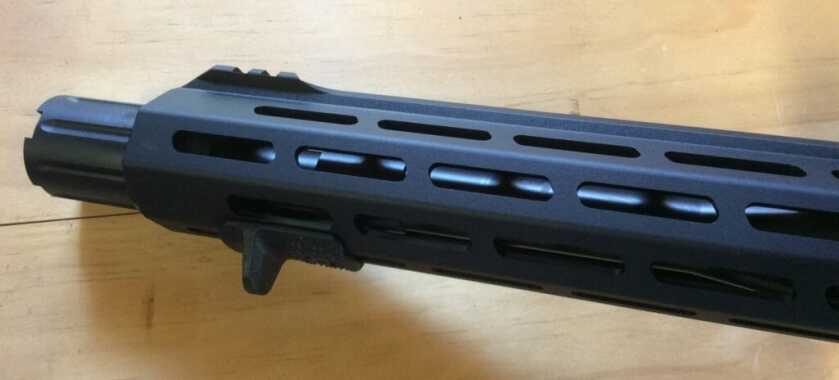
Originally I had chosen a red dot sight to go on the Victor since I could use it without worrying about eye relief. However since I wanted to see what kind of accuracy the Victor was capable of, I decided to go with a magnified optic. The optic mounting space on the gun measures 8” on top of the upper receiver, plus an additional 1.25” out near the muzzle. So plenty of space to mount any type or combination of optics. Using the arm brace as designed took some getting used to. The elastic strap on the SB brace works better than I expected though. I found once you fit it to your arm, simply slide your arm out leaving the strap set to that adjustment. Then when needed again you simply slide your arm in and get to shooting.
The hand stop on the other end of the gun is placed as far forward as it can get. You might be able to safely get two fingers in front of the hand stop, but any more and you risk touching the muzzle device and burning your finger once it gets hot. The fore-end is nice and slender, measuring 1.73” across the flats.
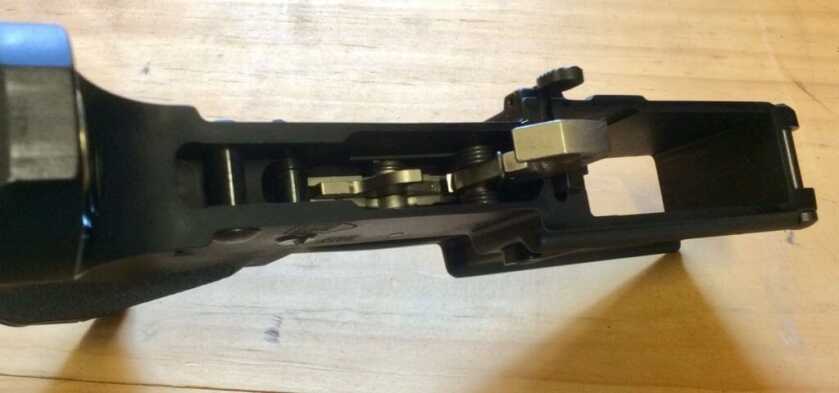
The trigger breaks at 8.5# according to my trigger pull gauge. The trigger is a standard AR-type configuration, which is ruff, tuff, and ready for stuff. It’s not the glass rod break of a really nice aftermarket trigger, but it’s made to work and work, and work. The trigger shoe is a straight type which I prefer, to the original curved type.

The BCG is Melonite coated and the coating makes for a nice hard and slick surface, but you should still lubricate the gun regularly. An AR15 can get away with less lubrication, but the AR10’s seem to get hotter faster and burn away oil quicker. So do yourself a favor and lubricate it after 3-4 magazines. The Bravo Co. Mfg. compartmented pistol grip makes a great place to keep a small bottle of lube. It is also very comfortable in the hand, with just enough tactile surfacing to make it grippy but not too sharp.

Another small feature that is important is the double staking of the two screws holding the gas key in place, a mechanical attachment holds when liquid adhesives have lost their ability due to heat compromise.
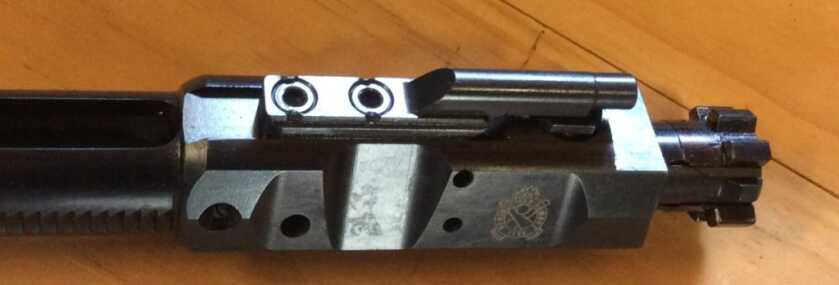
The receiver tightening feature, Accu-Tite tension system, does a good job of eliminating play between the upper and lower receivers.
The markings on the gun are bold and easy to read, including letting those around you know that you have a Saint in your hands. The important markings, FIRE and SAFE, utilize pictographs so that if you can’t read English you’ll still know what the settings mean. The gun comes with a single-sided selector lever but the markings are set up to be read from either side of the gun.
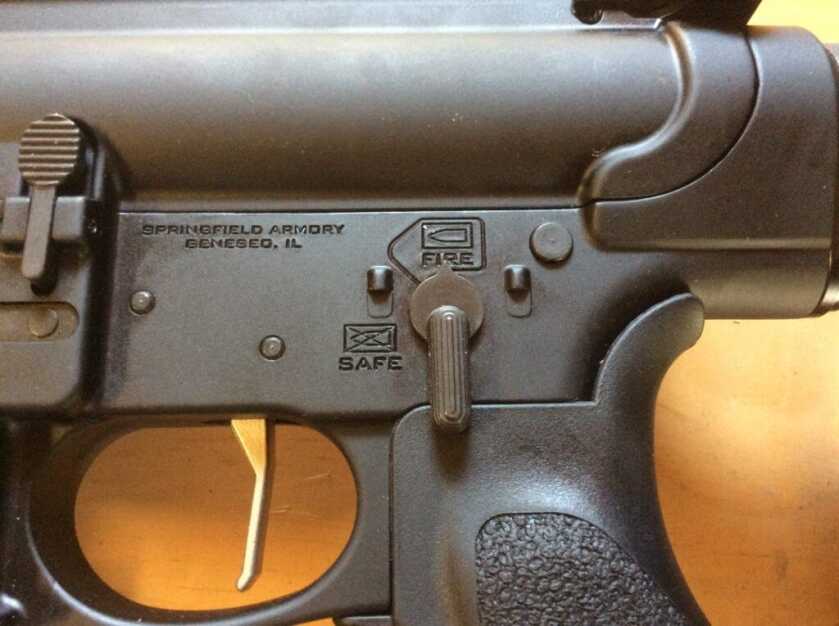
Integrated into the SB brace is a standard 1/2” quick detach sling attachment, that can be mated up with one you can place in the M-Lok fore-end.

That about covers the features and details of the gun. I’ve included the SA spec sheet for the gun that covers some of the more intricate details of the type of forged receivers, finish on parts, and measurements.
Now let’s get down to how it shoots and handles, velocities, accuracy, and recoil. As mentioned earlier I shot a variety of loads, from 110gr. HP to 180gr. RNSP. I was also curious about velocity loss from the 10.3” barrel, so I’ve included loads that I chronographed in my 20” gun and shot them in the Saint Victor for comparison. Seven loads were selected and fired for velocity and accuracy, they are listed here. Accuracy is the average of three 5 shot groups fired at 100 yards, velocity is average of five rounds.
110gr. Sierra HP / 2379fps avg. / 1.5” grp.
125gr. Sierra OTM / 2475fps avg. / 1.5”grp. / 20”-2771fps
145gr. PPU FM / 2377fps avg. / 6” grp. / 20”-2750fps
150gr. Rem. FMJ / 2316fps avg. / 1.25” group / Advertised @ 2820fps
168gr. Horn. ELD-M / 2375fps avg. / 2”grp. / Advertised @ 2700fps
173gr. LC M118 / 2214fps avg. / 2.5” grp. / 20”-2500fps
180gr. Winchester RN / 2142fps avg. / 1.75” grp.
I had the Saint Victor on the range for an afternoon and was able to put over a pile of different rounds through it. All I did was lubricate it before I started, and it ran and ran.
The biggest surprise for me regarding accuracy was how well the 180gr. RN performed. Also how disappointing the 145gr. PPU ammunition performed, considering how well it does from my other AR10’s. The gun definitely shot lighter bullets more accurately.

The recoil impulse was what I call “soft” compared to the harshness of some AR10 rifles. This is probably attributed to the muzzle device and the tungsten buffer. The muzzle blast also seemed to be directed away from the shooter which made for a much nicer bench session at the range.
I took a magazine full and did double taps on an 8” black bullseye target and was easily able to keep both hits in the black at 15 yards. If I was an LE patrolman in Alaska and needed to address bear or moose issues, the Saint Victor would be an excellent option to the standard 12ga. shotgun.
Considering this is a pistol and not a rifle, accuracy was more than adequate. If I needed to hunt with the Victor, in a survival situation I would not feel handicapped.
Some questions I try to answer in any product review I do are:
*What was my most liked feature? It’s a small thing, but I really appreciate the firing pin retaining pins retention.
*What is my least liked feature? The SB brace and strap take some getting used to.
*What was a pleasant surprise? The recoil impulse and muzzle blast were much less than expected.
*What was an unpleasant surprise? The amount of velocity loss was more than expected, however other propellants or factory ammunition may cure that issue.

My hope is this review is able to answer questions you may have about the Springfield Armory Saint Victor and help you make a more informed decision if you’re considering a purchase. MSRP is 1363.00. Personally, I give it a thumbs up.


Nice review, as I was wondering about MV. Newer shooter here, bought one for Home Def. Mounted OTAL-A plus red dot. I’m ready 🙂
Pushes thru both sides of a vehicle and the 5.56 usually stops on one door.
It’s kinda cool, but good grief… more powder will burn outside of the barrel than in it… the mussel blast from this thing must be a sight to behold.
In the end, what is this heavy expensive option supposed to be used for? Urban hog hunting??
I like the small size but the velocity loss is to much for me. I don’t see much of an advantage over the 300. Black out or the 7.62×39. All the extra weight associated with carrying loaded 308 mags but very little gain due to loss in velocity.
It is definitely more than a BO, I’ve not shot 7.62×39 in less than 16” guns so cannot speak to it. However, the fact that it handles heavier bullets better, puts it head and shoulders over both, in my opinion.
I will look into this further, I think I may add this 308 to my collection.
The Springfield Armory Saint Victor 308 win Pistol is an awesome weapon that would be my choice to have knowing that what ever situation Your faced with this bad boy will take care of business! I can’t wait to have my own.
It is beautiful here in California , we think they are not allowed here
I like it….fit form and function.. I will get a few of these….
Is there enough room within the walls of the hand-guard to swap the muzzle devise with a suppressor / can?
With that said what is the distance from wall to wall of the hard-guard at the muzzle end?
Eric, a lot will depend on your cans dimensions, but a TBAC Ultra 5 appeared to fit. I didn’t attach it, only eyeballed it.
It looks like the shorter barrel reduces velocity down to 30-30 levels. Not bad.
Great article, I am a big Springfield Armory fan on several spring armory products after reading the article doing a little research seems like the new Saint 308 pistol will be next on my list
What is the brand and spec on the optics used in the picture as tested that was used ?
Optic used was a 1-4x Bushnell.